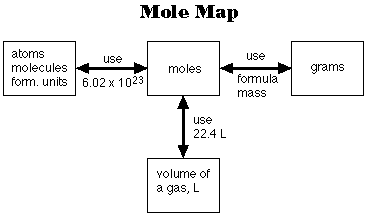

Alternatively this can be used as an individual extension exercise.ĥ. Along the way they will practise mole calculations including number of moles, atoms and molecules using Avogadro’s Number and others. Print out and distribute these five stations activities around your classroom and send your students off to complete their worksheet. Mole Calculations: Stations Lab - Avogadro's Number
Moles to particles calculator how to#
No prep moles resource including an interactive PowerPoint and corresponding worksheet with student questions and answers to teach your class stoichiometry including how to calculate masses of reactants/products using balanced equations and molar ratios.Ĥ.

Moles - Molar Ratio and Reacting Masses NO PREP complete lesson No prep moles stoichiometry lesson teaching students how to complete mole calculations involving molar volume, solutions and masses to volumes/concentrationsģ. Moles - Molar Volume and Concentration of Solutions No prep moles lesson with interactive PowerPoint and differentiated worksheet with teacher answers to assess molar mass and mole to mass stoichiometry calculations.Ģ. Moles - Molar Mass, Avogadro's number and Mole to Mass calculations You may be interested in my moles bundle which includes this resource and those below:ġ. Perfect as a teacher-led lesson, homework task or sub-plan. Answers are included for self/peer/teacher assessment. To assess student understanding use the two tables of questions of varying degrees of difficulty. Starting with background theory to define the mole and Avogadro's Number students are shown worked examples for how to calculate the number of atoms in elements and molecules.įollowing this, they are taught how to calculate the number of moles when given a mass and molar mass and subsequently how to calculate the number of particles. Use this moles worksheet to show your students how to calculate the number of particles in a substance when given either the number of moles or the mass.


 0 kommentar(er)
0 kommentar(er)
